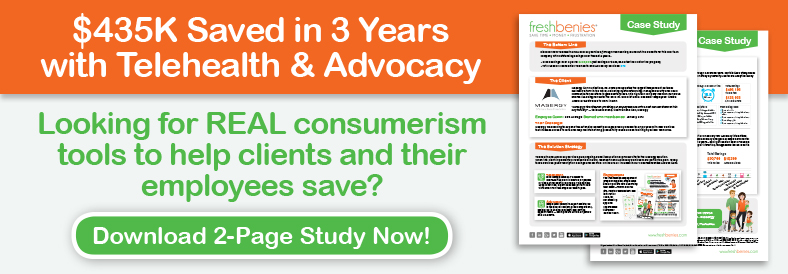WHO BENEFITS MOST FROM THE WORK YOU DO?
Who benefits most from the work you do? Think about that question for a few minutes and let it really sink in. Because not everyone will get high benefit from the work you do best. And you aren’t the best at everything. So, we need to find a match between what we do best and those who need the things we do.
Might sound obvious to say you need to have an ideal client profile, but way too many agencies are operating on the “whoever fogs a mirror” approach. But when we ask if an agency has clients they’d like to fire, we always get a resounding “Yes!” Which tells me that it’s not so obvious that we need to get more specific about which clients are a best fit.
To Uncover Your Ideal Client, Look at It from Multiple Angles
Your perspective: Who do you want to work with? What types of clients? What type of businesses?
I often hear, “I don’t know – anyone.” But when we dig deeper, the answers start coming out. Maybe you like working with smaller companies because of access to the owners or their desire to really know their employees and feel personally connected to their team. Perhaps you like larger companies who have HR managers and CFOs where you can have detailed analytical conversations about plan designs and technical HR and compliance support.
Their perspective: Who really gets the benefit from the work we do?
Regardless of whether they fit the tactical profile, if a company’s goals and values/needs profile don’t match yours, they’re not going to get the benefit of what you offer. For example, if they’re looking for a price-shopping vendor and you want to be a business adviser, you’re both going to be consistently frustrated.
Refine Over Time
When starting out, any client often does make a “good” client because you have to get started somewhere. But as you work diligently with multiple clients over the years, you should be filtering through various ideas of what’s working and what’s not working in those relationships. Your client profile should become more refined as your business ages.
For example, when we started our consulting practice, we worked with benefits producers and practice leaders. Over time, we realized that wasn’t enough, and started developing a profile of the type of leader we wanted, choosing three primary criteria: 1) Strong leaders 2) Have the desire to change 3) Willing to work hard.
This still leads our criteria, but we’ve refined it further to recognize that at our core, we’re very empathetic people-focused people, and we’ve realized that we and our clients thrive when we have that people-focused connection. Quick-starts who are easily distracted by the next bright ‘n shiny, are looking for a silver bullet concept, or are more focused on revenue as their primary goal vs. believing their employees and clients should be the center of their universe are not a good match for us. With this criteria, size isn’t a factor; it’s the desire and willingness to be a contributing part of something larger that positively impacts many others around them.
Clarity Makes Selling Easier
It feels good to get clarity on who’s a good fit and who isn’t. It makes your prospecting efforts so much easier. If, through your marketing, you’ve already been talking to this audience about things that concern them the most, and speaking in a way the resonates with them, they will be prepared for a conversation about what you do and who you are, and they come into the conversation expecting to find a right fit.
For example, if you like the larger companies with the HR managers and CFOs, your marketing might be laser focused on the financial analysis and the productivity aspects of a benefits program. Or if you’re working with the smaller companies who are very connected to their team, then your marketing may be more focused around the personal connection and caretaking aspect of a benefits program.
And then, through initial prospects engagements (social media, email, phone, in-person) where they’ve had the chance to experience your marketing, and know what to expect, you’ll both be able to learn fairly quickly if you do have that right fit or not.
An Exercise to Define Your Ideal Agency Client
How do you get this clarity? Look at your list of clients and pick your five favorites that you’d replicate if you could. Then choose five that are consistently frustrating to work with.
Now start taking notes. Get feedback from leadership, producers, and account managers. Do a whiteboard/sticky note exercise noting characteristics for each group. Include everything from the tactical and technical and to the feelings and intangibles.
What trends do you see on each side?
Group those trends into characteristic groups, and you should have a pretty clear profile of what you want from a client and what you need to avoid. It’s important to note where your line is – what characteristics are deal breakers?
Your team will thank you for doing this exercise, gathering their input, and then following through on it. As much as this is a business development exercise, it’s also an employee engagement exercise. Because working with clients who are not a good fit creates an unhappy work place for the people who work with them.
Examples of Ideal Client Profiles for a Benefits Agency
Wondering what it might look like when you’re done with the exercise? Here are a couple of samples from agencies we work with who have a very clear idea of what they want in a client.
Example target client profile #1:
51-250 employees; privately held; owners are at the decision-making table; open to the utilization of technology. They put their employees first, and write the check to prove it. They have an emphasis on healthcare consumerism and are willing learn about the factors driving their premiums and out-of-pocket expenses, and then use that information to make decisions.
They look to us to help guide them through this less-than-perfect system. The decision-makers are decisive, detail oriented, and loyal. They are looking for help with benefits administration, compliance, payroll, and HR.
Example target client profile #2:
We work with organized, sophisticated organizations who have leaders with a vested interest in the business, brand, perception, community, and technology. They want to take care of employees, creating a productive environment where everyone is putting in. They are clear on the vision of the company and want to be sure it is communicated to the employees and the community.
They see the value we bring with our analysis, advice, recommendations, and solutions. They look to us for guidance as an advisor in benefits, compliance, and HR because we use our solutions and expertise to help them become better businesses. Our clients are looking for a partner to help them grow their organizations, and we become that partner.
A Surprising Upside to Understanding Your Target Client
When you understand exactly the type of business you want to work with, you can carry greater confidence into conversations with prospects because you know you’re looking for a right fit. You’re not desperately hoping they need a new broker and you have something, anything, they may need.
Our clients are confident in their profiles and use that to their advantage from the first conversation. One client explains it this way, “I always tell every company we meet with that we are only going to engage 6 – 10 new clients a year that meet our client profile and that’s it. Working with people who fit our ideal profile is critical for both parties. This catches some off guard, but we communicate in a way that doesn’t come off being arrogant.”
How comfortable are you taking that conversation into a prospect meeting? Comment below!
















